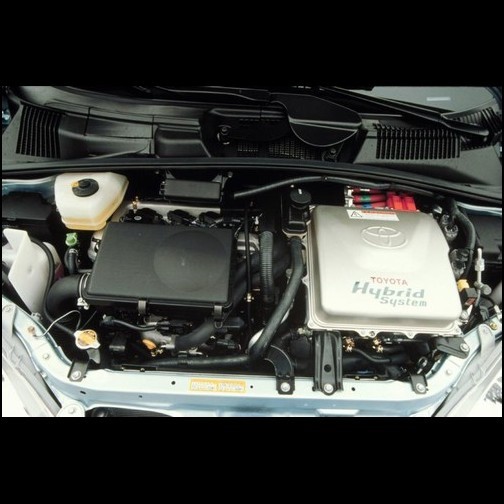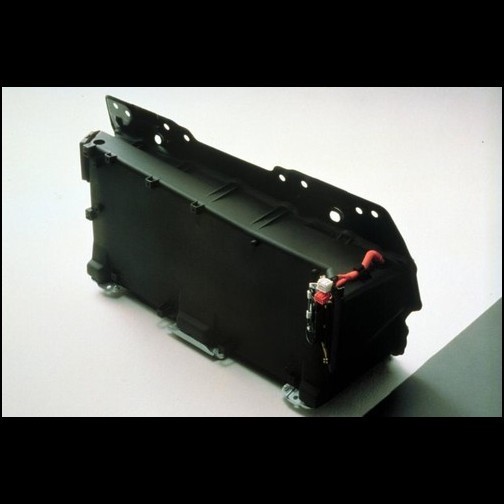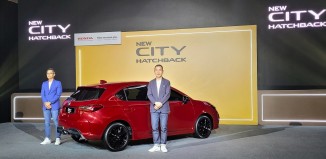The Toyota Hybrid System
The growing carbon dioxide levels in the atmosphere have been causing concern because they can cause global warming. While this gas is generated in nature, man has also increased its levels unnaturally in the 20th century with the use of the internal combustion engines for automobiles. Furthermore, as catalytic converter usage widens, more carbon dioxide is created since the catalyst converts the toxic components in exhaust gases into carbon dioxide and water vapour; unfortunately, while being non-toxic, carbon dioxide can cause other problems.
Toyota, like many other responsible automakers, has been actively looking for ways to improve combustion as this has direct implications on carbon dioxide emissions. As part of its Eco-Project, Toyota developed hybrid propulsion system suitable for mass-produced passenger cars which it called the Toyota Hybrid System (THS). This new system is the heart of the Prius which was the first mass-produced car with a hybrid powerplant when it went on sale in late 1997 in Japan. In factory tests comparing conventional vehicles powered by a 1.5-litre engine, the amount of carbon dioxide emissions of the THS are 50% lower.
28 KMS/LITRE
This new propulsion system uses both a petrol engine and an electric motor and the combination, running alternately or together according to driving conditions, has enabled the Prius to attain twice the fuel efficiency of conventional petrol engined cars; factory tests have returned up to 28 kms/litre (about 80 mpg). Moreover, with the use VVT-i (Toyota’s continuously-variable valve timing system) and the electric motor to reduce engine load during acceleration, the levels of toxic elements in exhaust fumes can be to about 1/10th of normal levels.
The system builds on earlier successes by Toyota to develop
environment-friendly, low fuel consumption engines such as the lean-burn engine in 1984, and the direct injection petrol engine in 1996 (which is now available in certain domestic models).
The THS comprises the technologies of clean, high-efficiency petrol engines, electric vehicle power systems using nickel-metal hydride (Ni-MH) batteries, advanced automatic transmissions, and computerised management.
The capacity of the Ni-MH batteries is kept at only 80% because a 100% capacity can make them pretty hot and, apparently, it is not good for battery life. Incidentally, the cost of the battery pack is presently very high but can last for as long as the first owner is likely to keep it (10 years is claimed).
The batteries impose one other disadvantage: weight. As anyone who has ever lifted a car battery will know, it is quite heavy, so imagine how heavy 40 units are! This bumps the weight of the Prius to 1,515 kgs, which is some 35% heavier than a conventionally-powered car of similar size. It would have been heavier too had there not been a concerted effort to keep weight down. The measures included using a special body frame, induction hardening of the centre roof pillar and a compact powertrain. The extra-economical nature of the Prius also meant that the fuel tank needed to contain only 50 litres, which indirectly means lower weight when running.
TWO POWER SOURCES
The THS has two motive power sources which engage depending on driving conditions. A small 1.5-litre high-efficiency 1Nz-FXE petrol engine provides the main power to drive the front wheels, as in conventional cars. Drive power can also be supplied by an electric motor, which derives its electricity from the batteries and an electric generator.
Fuel efficiency is further boosted by other measures, such as automatically switching off the engine when the vehicle is at a stop–a time when fuel is usually wasted. During braking, it is also possible to regenerate some of the energy, thereby extending the energy level of the batteries.
SPLITTING POWER
One of the major components is a power-split device in the hybrid transmission which allocates power from the petrol engine either directly to the vehicle’s wheels or to the electric generator. At the same time, the petrol engine is automatically controlled to keep its speed in the most efficient range at all times. The power to drive the vehicle is appropriated from the petrol engine or from the electric motor in response to driving conditions.
Besides incorporating the power-split device, the hybrid transmission also has the electric generator and the electric motor. The power-split device utilizes a planetary gear to constantly re-allocate the power supplied from the petrol engine. One of the output shafts of the power split device is linked to the electric motor and wheels, while the other connects to the electric generator.
The entire transmission system functions as an electronically-controlled continuously-variable transmission(CVT) by fluidly adjusting the engine rpm, electric generator and electric motor for optimum running.
EFFICIENT USE OF POWER
As part of the transmission’s control system, the petrol engine is regulated to keep it operating within the high torque zone, which is the most fuel efficient (ratio of power to fuel consumption). Its rpm is automatically controlled to keep it within a set range, so that the high torque zone can be used as much as driving conditions allow.
The distribution of the petrol engine’s power is determined by factors such as the amount of pressure on the accelerator, vehicle speed, and battery charge. The portion that is used to turn the wheels is balanced with that which is used to generate electrical power. Electrical power created by the generator may then be utilized to operate the electric motor, which, together
with the power derived directly from the petrol engine, helps propel the vehicle briskly.
THE ATKINSON CYCLE
The petrol engine is really the hybrid system’s main power source. It is a high expansion ratio petrol engine using the highly heat-efficient Atkinson Cycle. This concept is a heat cycle which was proposed by British engineer James Atkinson and has since evolved into an improved version called the Miller Cycle. The Atkinson Cycle is very heat-efficient compared to conventional engines, but is rarely applied because it does not produce enough power unless used with a supercharger. However, for the THS, this drawback has been minimised and it efficiency is further improved by the use of VVT-i and by reducing friction loss between its components.
The high expansion ratio heat cycle increases the expansion ratio by reducing the volume of the combustion chambers and allows combustion energy to be used more effectively. Engine knock is also avoided by delaying the timing intake valve closure, since this reduces compression pressure. Moreover, pumping loss is reduced because of decreased intake resistance during times of partial load.
The low-revving highly fuel-efficient 1.5-litre engine has a maximum speed of only 4000 rpm, thus requiring a lower degree of parts strength than higher-revving engines. Many moving parts are lighter, the crankshaft has a smaller diameter, the piston rings have lower tension, and the valve spring load is less, resulting in a large reduction of friction loss.
RECOVERING ENERGY
The THS’s high efficiency is partly the result of measures to reduce and recover energy that is normally lost in vehicles with conventional engines. When the vehicle stops or decelerates at low speed, the petrol engine automatically stops operating to reduce energy waste. When the vehicle accelerates from rest, the initial power for taking off comes from the electric motor; the engine only begins operating later.
Also, at extremely low speeds or when the petrol engine is operating in the low efficiency zone (low rpm), the fuel supply is cut off and the vehicle runs on its electric motor alone. During engine braking or normal driver-induced braking, the electric motor operates like a generator (remember the dynamo on bicycles?), converting the vehicle’s kinetic energy into electrical energy, which can then be used to charge the battery.
The system is particularly effective in recovering energy during city driving, where driving patterns with repeated acceleration and deceleration are common. To maintain a constant charge, the batteries receive charging energy from the electric motor and the engine-powered electric generator via an advanced charging control system. Unlike 100% electric vehicles, the battery of the THS does not require external charging.
The THS is just a start and there can be no doubt that its efficiency and performance will increase in future. In fact, for the US market where crusing speeds are higher and journeys are longer, modifications have been made to the operation to provide more brisk performance but Toyota says that it is still superior in terms of low pollution levels and economy. The engineers are striving to have the US models comply with the upcoming California Super Ultra Low Emission Vehicle (SULEV) standard. SULEV is approximately 85% cleaner than the strictest existing petrol vehicle standard, Ultra Low Emission Vehicle (ULEV).
Related stories:
What’s it like driving a Prius?
Singapore government gives incentives for cars like the Prius
























